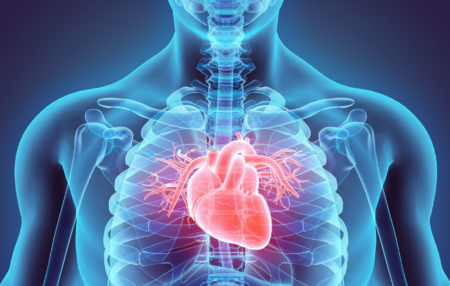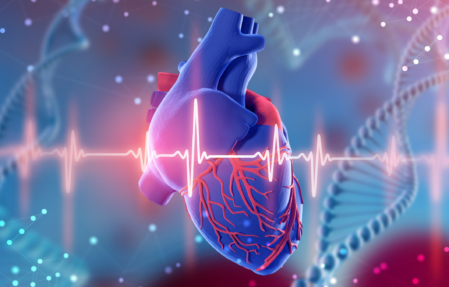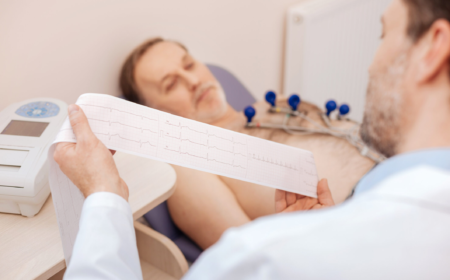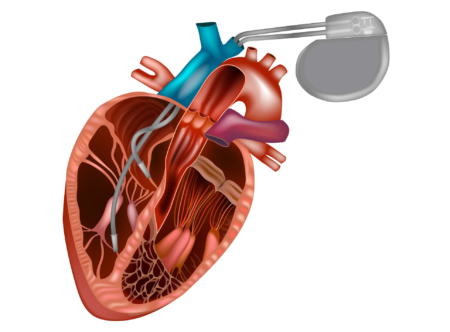How the heart works
The heart is a muscle responsible for blood circulation. It distributes blood throughout the body via a network of arteries and veins, thus supplying the tissues with oxygen and other nutrients.
Your heart is normally slightly larger than your clenched fist. Your heart is capable of beating over 100,000 times a day (at a rate of about 70 beats per minute). In one day, it pumps more than 1,760 gallons (7,000 liters) of blood through approximately 11,800 miles (19,000 km) of circulatory system.
The heart is divided into four chambers: two upper chambers known as atria and two lower chambers known as ventricles. The blood enters the heart through the right atrium. From there it travels to the right ventricle and is pumped into the pulmonary artery.
The pulmonary artery carries the blood to the lungs where it is oxygenated. It then flows through to the left side of the heart (the left atrium and then the left ventricle) and is then pumped throughout the circulatory system.
If you place your finger on the inner side of your wrist, you will feel your pulse, which follows the contractions of the heart.

A few words about electrical impulse
The contraction of the heart muscle is automatic and is triggered by an electrical impulse. The impulse is caused by a particular group of cells located in the right atrium. When the electrical impulse or the conduction pathways which transmit the impulse across the cardiac muscle, are disrupted, the heart rate either slows down, speeds up, or the rhythm can become irregular.
This can cause disturbances such as fainting, dizziness and fatigue. These disorders may lead to the implantation of a pacemaker. Various tests may need to be performed, some of which you may have previously experienced, such as electrocardiography (ECG), 24-hour continuous electrocardiographic recording (Holter), and heart rhythm monitoring via temporary catheters leading into the heart (electrophysiological investigation).

What is bradycardia?
Your heart normally beats between 60 and 80 times a minute. A rate lower than 60 beats per minute is normal only if you are resting, asleep, or very physically fit. A heart rate below 60 beats per minute is called bradycardia.
An abnormally slow heart rate or a very long pause between beats can cause tiredness, dizziness, and blackouts. When bradycardia is diagnosed in isolation, this condition is normally treated with a pacemaker.

How the pacemaker helps treat bradycardia
Pacemakers are like miniaturized computers whose job it is to monitor your heart’s natural beat. If necessary, they will send out an extra stimulation, generating an electric impulse, which makes up for your heart’s deficiency.
Cardiac stimulation by implantation involves the following: a pulse generator (the pacemaker itself) consisting of a sophisticated electronic circuit which monitors and analyzes each heart beat and, if necessary, delivers imperceptible low charge impulses which regulate the heart’s activity. It contains a lithium battery which supplies the electricity.
Leads carry the electric impulses to the heart. The leads are made from fine flexible insulated wires and link the pulse generator to the heart. The memory contained in the pacemaker keeps a record of the heart’s activity.
From this, your doctor will be able to tell how your heart and your pacemaker have been behaving since your last check-up, and will be able to decide from this information whether or not to continue with the treatment.
It is possible to 'communicate' with the pacemaker using a device known as a programmer. In this way, your pacemaker’s settings can be adjusted painlessly without the need for surgery.
